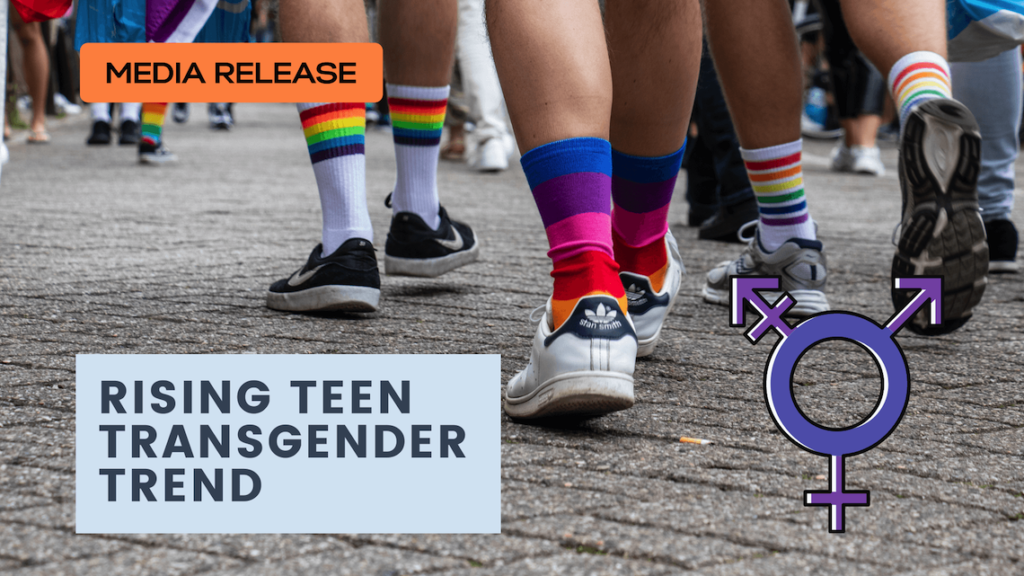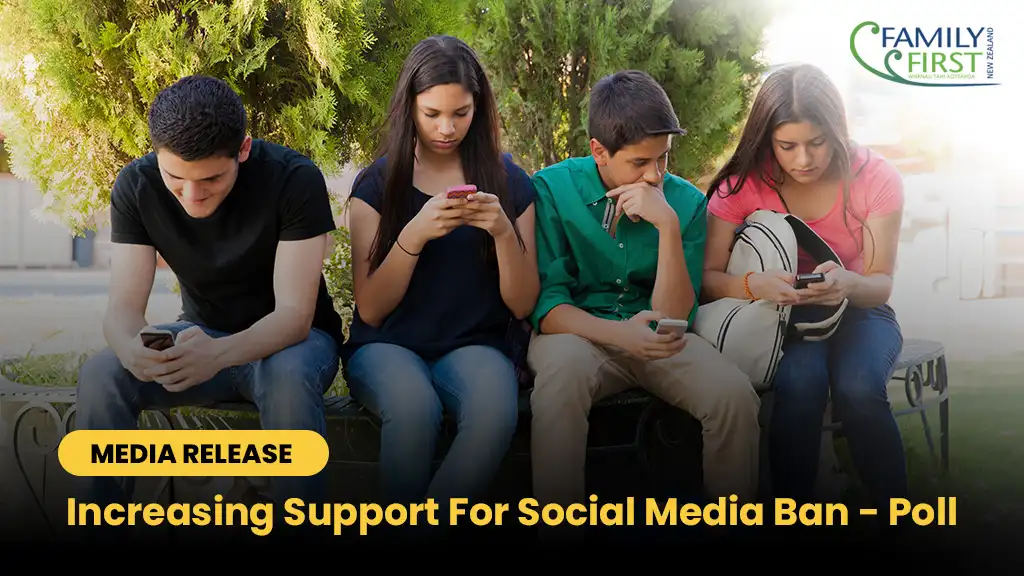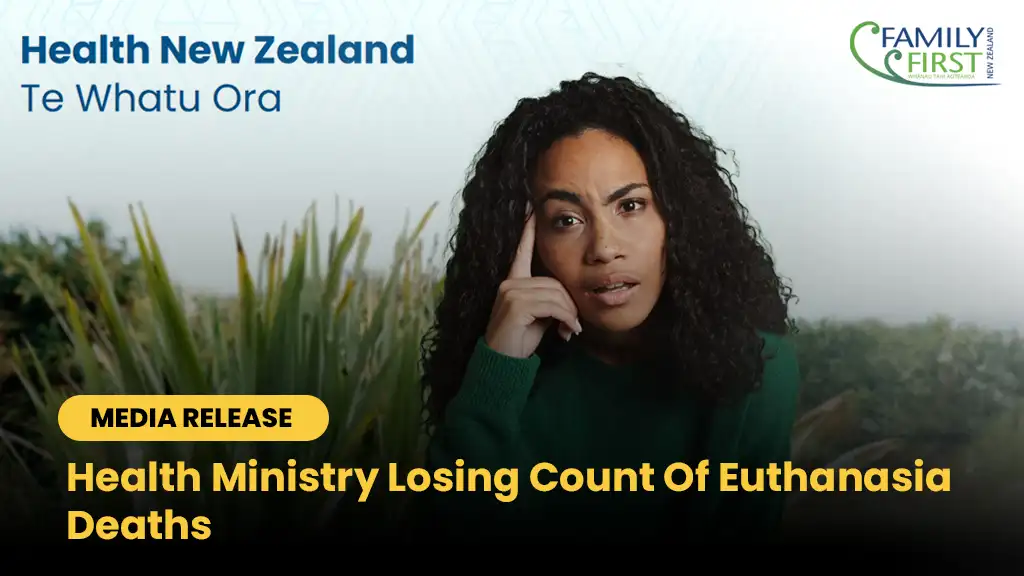MEDIA RELEASE
4 November 2021
Growing Problem Of A Teen Transgender Trend
Official data shows that an increasing number of young people are being diagnosed with gender identity issues, are receiving puberty blockers, but that the numbers formally diagnosed as opposed to self-diagnosed actually indicate a youth fad which parents, schools and health professionals should be alert to.
According to Ministry of Health data, the number of children (0-19 years) diagnosed with “Sexual/Gender Identity disorder” each year in New Zealand has significantly increased from 12 cases in 2012/13 to 63 cases in 2019/20 – an increase of more than 400%. Of most concern is the dramatic rise in 10-14 year olds being diagnosed each year (just 2 in 2012/13 up to 17 in 2019/20 – a 750% increase) and 15-19 year olds being diagnosed (just 8 in 2012/13 rising to 45 in 2019/20 – a 460% increase).
Responding to an Official Information Act request, the Centre for Youth Health which serves Auckland, Counties Manukau and Waitemata DHBs said that they currently have more than 300 active cases.
The Ministry of Health has also revealed that more than 600 children aged 10-18 were prescribed puberty blockers (Goserelin or Leuprorelin) in the past year – double the number from just three years ago. This is despite claims by some politicians that the use of puberty blockers are very rare.
However, what is also significant is that the number diagnosed plummets after the teenage years. Up until 2015, the numbers of teens 15-19 years old being diagnosed was less than or similar with the 20-24 age bracket. But in the most recent year recorded, the number of diagnoses for teens 15-19 years old was five times higher than for the 20-24 age bracket.
Similar trends have been observed in the UK, Australia and the USA. Concerns have been raised about social contagion – the spread of a behaviour throughout a group, which may play a role in transgender-identification among young people who are known to be vulnerable to peer influence.
According to the Auckland University adolescent health survey in 2019, 1% of Kiwi teenagers identify as transgender, and a further 0.6% aren’t sure of their gender. The prevalence is often conflated to almost 4% by the addition of the ‘unsure’ 2.5% from the earlier 2012 study.
Given that there are almost 300,000 secondary students in New Zealand alone, there could be approximately 5,000 teenagers diagnosed with gender identity issues – but of course the official numbers are nowhere near that. This is clear evidence of a fad which has been observed in many schools, and even commented on by students as well.
Australian paediatrician Dr John Whitehall warns that the adolescent health survey Youth2000 should be treated with caution – as should statements by young people. He says:
“Results of such tick-in-the-box questionnaires are unreliable. A tick in a box to the question of “do you think you are transgender” cannot be compared in accuracy with the standard definition published in DSM-5 according to which childhood gender dysphoria is based on “a marked incongruence” between natal and perceived gender lasting “at least six months”; “manifested by at least six” features, including “a strong desire … and insistence” on, together with a “strong preference” for, the company, clothing and toys of the opposite sex and its role in fantasy play; and associated with rejection of the stereotypes of its natal sex, including anatomy. Also, to comply with “dysphoria”, there should be “significant distress or impairment … in functioning”.
Many young people today are wondering if they were “born in the wrong body”, and transgender activists are pushing an agenda that insists the body should be remade to conform with feelings. As such, the transgender trend spreads a confusing message to all kids, including those who struggle to accept their sex. Regrettably, this trend is taking root in the school curriculum where these radical ideas are being indoctrinated into young people, often without the express permission or even knowledge of parents.
Primary age students are now being targeted with the confusing and dangerous message that changing sex is as easy as changing clothes, girls are discovering that biological boys have free access to their changing rooms, and the curriculum states that parents are able to be kept in the dark when their child has decided to identify as transgender during the school day.
A poll last January has found increasing opposition to gender ideology being taught to children in schools, and support for a ban on the use of puberty blockers for young people.
Parents are increasingly being told by some medical professionals (including the Ministry of Health in New Zealand) that children who express discomfort with their biological sex are likely to be transgender and should be assisted in making a social and medical transition to appear as the opposite sex to prevent self-harm or suicide. Though this perspective runs counter to the many studies that demonstrate children, if left untreated, become comfortable in their biological sex after puberty, it has nonetheless led to a method of treatment known as the “gender-affirmative” model in paediatric medicine. This harmful protocol recommends a “social transition” in early childhood, followed by puberty blockers in early adolescence, and chest binders and cross-sex hormones (testosterone for girls and oestrogen for boys) around age 16.
The University of Waikato’s Trans Health Research Lab which pushes the “gender-affirmative” model has been silent on the latest statements coming from key leaders in the World Professional Association for Transgender Health (WPATH). Two of the world’s leading doctors for gender reassignment procedures – both of them transgender women – have expressed concern about the number of children being given puberty blockers, and undergoing gender/sex reassignment surgery, describing the rise in procedures as “deeply worrying”. Dr Marci Bowers and Dr Erica Anderson warn that children should not be given puberty blockers, which they say could have irreversible consequences. They also warn that reassignment surgery can leave people permanently sexually dysfunctional. There are also serious, long-term mental-health issues to consider.
This information is significant as the politicians currently consider the proposed ban on ‘conversion therapy’.
Patrick Parkinson AM, an Australian expert on family law and child protection with 35 years’ experience in these fields and now Professor of Law at the University of Queensland has warned the Select Committee that the proposed ‘conversion therapy’ law will scare therapists away from troubled teens. “The Bill creates a draconian offence… [S]ome mental health professionals refuse to see young patients with sexual orientation or gender identity issues who have other serious mental health concerns. This could lead to an increase in the mental health burden on already very troubled young people, and may lead to increased suicide attempts… Parents who act upon expert medical advice in helping their children with gender identity issues risk prosecution and jail sentences under the law as currently drafted.”
ENDS
For More Information and Media Interviews, contact Family First.




